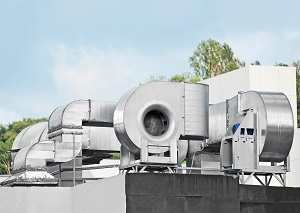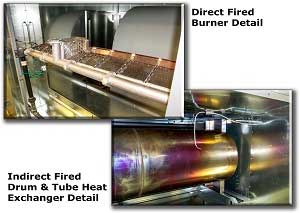Under Pressure: Is Building Air Pressure Really Important

6 Actions You Must Take to Prevent Mold Growth in Commercial Buildings

9 Reasons Commercial Kitchen Ventilation Requires Specialization

The air temperature inside a building is important to the comfort of its occupants and the condition of its contents, but did you know the air pressure is also a critical factor?
A general definition of air pressure is “the pressure within a container due to the compression of atmospheric gases.” If the “container” is a car tire, the amount of air pressure determines if the tire is properly inflated and can affect a vehicle’s gas mileage. If the “container” is a building the air pressure can affect temperature, air flow throughout the interior and energy usage.
A building’s interior air pressure will be either negative or positive, depending on the air-tightness of the building and other forces such as wind, exhaust loads, and amount of make-up air.
Confused? Here are some definitions:
Negative indoor air pressure: This occurs when the inside pressure is less than the pressure outside causing air to leak into the building. This is called infiltration.
Positive indoor air pressure: This results when the inside pressure is greater than the outside pressure. In this case air pushes from inside the building to the outside.
Which is better? In general, a building benefits from having slight positive indoor pressure. This is especially true during the heating season because it is expensive to heat the cold air that infiltrates from outside when interior pressure is negative.
Positive pressure also helps improve indoor air quality because contaminants such as smoke and particulates are forced out of the space.
Any air that is exhausted out of the building needs to be made up. For every cubic foot of air that is exhausted, another cubic foot of air must be brought in to replace it. If there is no make-up air or if an HVAC system exhausts more air than is made-up the building will draw in cold air from the outside through any cracks or openings.
Signs of too much negative pressure include:
- People complaining of cold drafts
- Exterior doors that are difficult to open and close
- Odors linger such as diesel truck or fork lift exhaust
- High levels of carbon monoxide, radon or other dangerous gasses
Other indicators of negative air pressure problems could be:
- A pilot flame will not stay lit
- Visible soot or flame rollout at the bottom of a furnace
- Slow recovery of a water heater
- Back drafting of combustion appliances such as gas hot water heater or furnace
- Mold and mildew
- A musty smell or stagnant, stale air
- A rush of air or draft when opening an exterior door
- Exhaust fans not working properly
These indicators of negative pressure could result in:
- Higher energy costs
- Higher maintenance costs
- Higher housekeeping costs
- Uncomfortable and unsatisfactory workplace conditions
A Well Tuned HVAC System Can Prevent Pressure Problems
A building’s HVAC system has the biggest impact on air pressure. HVAC systems bring in outdoor air, heat it or cool it, circulate it through the building and exhaust it back outdoors.
A slight positive pressure helps eliminate stratification. This ensures even heat from top to bottom and end to end in the building.
However, there are applications where negative pressure is both necessary and required. Two examples of these instances are with kitchens and indoor swimming pools. In kitchens, negative pressure keeps smoke and odors contained rather than leaking out to the dining room. Indoor pool areas are another place where negative pressure takes on increased importance. In these spaces negative pressure prevents the chlorine smell from migrating into other areas of the hotel.
An appropriate makeup air strategy will prevent problems caused by improper air pressure. Regular checks of the HVAC system and a good maintenance program will keep air pressure at an optimum level.
Avoid an indoor air crisis by taking air pressure seriously. Preventing the problems caused by too much negative or too much positive air pressure is likely to be much less costly than correcting the problems.




